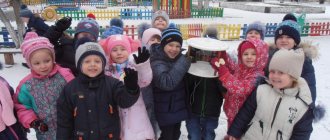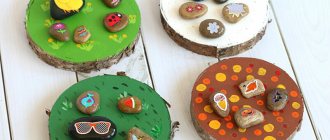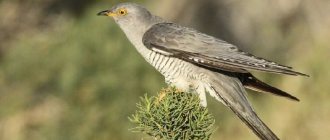Project “Birds of our region”
Project “Migratory birds of our region”
Introduction
.
-We all know that birds fly south. But not everyone knows for what purpose birds do this. Some believe that flight is an instinct of birds. Others say that in the south there is a lot of food and it is warm there. And some people think that birds are attracted by a magnetic field. -We can assume that if the birds do not fly south, they will be deprived of warmth, food and may disappear.
Relevance.
— I decided to dedicate my project to migratory birds in order to learn more about the life of birds. 1. Yellow-throated Bunting
Area. The Amur region west to Burei, Primorsky Krai, Korea and eastern China. The yellow-throated bunting winters in Japan and southern and southeastern China.
2.Starling
Area. The common starling is widespread in all biogeographical regions with the exception of the Neotropical region (Central and South America). 3.Cranes
Cranes are widespread on all continents, absent only from Antarctica and South America. They live near bodies of water or wetlands. Many species choose forested marshes with fresh water in the summer and move to coastal wetlands with salt water in the winter. Two species - belladonna and African demoiselle - have adapted to live away from bodies of water and live in the arid steppe zone or savannah. 4. Wagtail
Of the 15 species classified as wagtails, most are found in Europe. Yellow wagtails are sometimes classified into a special genus (Budytes, Pliska). The most common species in Central and Northern Russia, willingly staying close to human habitation, is the white wagtail - gray above, white below; the top of the head (except for the white forehead), throat and middle tail feathers are black. It nests twice a summer in cracks in walls, on rafters under bridges, in depressions in the soil, in hollows, under the roots of trees and bushes, etc. The loose nest is lined with shreds of wool and hair. In autumn, it gathers in large flocks for migration. 5.Duck
Duck, several genera of birds of the Anatidae family. Ducks include shelducks, diving ducks (pochards), white-headed ducks, dabbling ducks, steamer ducks, muscovy ducks, and mergansers; in total more than 110 species. Ducks are widespread; there are more than 30 species in Russia. The male duck is called a drake. 6.Drozd
True blackbirds are a genus of birds in the thrush family of the passerine order. 62 species. Body length 20-25 cm. They move along the ground by jumping, crouching at the same time. Distributed in Europe, Asia and America; introduced to New Zealand. For the winter, northern species fly south, gathering in large flocks. 7.Swallow
Swallows live over a vast territory: Europe, Asia, northern Africa and almost all of North America. European swallows winter in Equatorial and Southern Africa, Asian swallows - from India to the Philippines, North American swallows - in the northern regions of South America. European swallows return to their nesting sites in late March and April. There are no sweeter swallows than ours. With their fast flight, they enliven the rainy, gloomy or clear summer sky. People have long treated swallows with love and even gave them an affectionate name - killer whales. 8.Flycatcher
Breeds in most regions of Europe and Western Asia. Winters in Africa and southwest Asia. 9. Skylark
The range of the skylark is very extensive, it includes almost all of Europe and most of Asia, as well as the mountains of North Africa. Also introduced to Australia, North America, where it lives in the west, and New Zealand. 10.Kingfisher
The species includes 6 subspecies, distributed in Eurasia (up to Southern Scandinavia and St. Petersburg), in northwestern Africa (up to the Sahara), in Indonesia and New Zealand, New Guinea and the Solomon Islands. There are sedentary and migratory subspecies. About 5,000-10,000 pairs nest in Italy. How do birds know when it is time to migrate? With the onset of the change of season, birds, at the same time, gathering in flocks, make their amazing flight. Birds have an excellent ability to determine when the days are getting longer and when, on the contrary, they are getting shorter. For them, this is a signal for the start of the flight. Additional signs of the beginning of migration can also be a change in temperature and a change in the amount of food. We can identify three main factors in how birds know that it is time to migrate: *All birds fly away every year at the same time of year, when the season changes; *Birds can tell when the days are getting shorter or longer, and this serves as a signal for them to start migrating; *Another reason is an excess of fat deposits and the disappearance of food also serves as a signal to the bird that it needs to go to warmer climes. How do birds find their way during migration? Simply saying that instinct leads them home does not explain the mystery. How do they find their way? One hypothesis is that birds can sense the magnetic fields that surround the Earth. Magnetic lines are located in the direction from the north magnetic pole to the south.
Perhaps it is these lines that serve as guides for birds. There is another hypothesis that birds can navigate by the sun and stars.
Conclusion.
“Based on all of the above, it turns out that the length of daylight and the disappearance of food tell the birds when to go to warmer climes. And the instinct to continue the kind in the spring says that it’s time to fly north.
1
Project in kindergarten in the senior group. Wintering birds
Project “Wintering birds of our region”
“Nature is the only book, every page is full of deep content” I.V. Goethe 1. Brief abstract of the project: Preschool childhood is a crucial period of human life: the foundations of a correct attitude towards the surrounding world (nature) are laid , things, people), value orientation in it. Fostering love and respect for the native land and nature is the most important component of moral education. To raise a good citizen who wants to protect and protect nature, you need to know it. Forming an understanding that man is part of nature, he must preserve, protect and defend it, that everything in nature is interconnected. Developing the ability to behave correctly in nature and protect it. 2. Project type: Educational, creative, short-term. Implementation time: 2 weeks. Project participants: children of the senior group of kindergarten, teachers. Venue: group, kindergarten area. 3. Relevance of the project: In modern conditions, the problem of moral, labor and environmental education of preschool children becomes particularly acute and relevant. It is during preschool childhood that the formation of human personality occurs. Therefore, it is very important to awaken in children an interest in living nature, to cultivate a love for it, to teach them to protect the world around them and take care of it. The theme of the project “Birds in Winter” was not chosen by chance. After all, it is birds that surround us all year round, bringing benefits and joy to people. During the cold season, there is significantly less available food, but the need for it increases. Sometimes natural food becomes practically unavailable, so many birds cannot survive the winter and die. And we, teachers, together with parents, must teach children to see this, expanding their understanding of wintering birds, their habits and way of life, and create conditions for the child to communicate with the natural world. 4. Statement of the problem Insufficient understanding of children about wintering birds. Children do not have enough understanding of the lifestyle, habits, nutrition and homes of wintering birds, and how they feed in the winter. 5. Goals and objectives of the project: To cultivate a careful, caring, responsible attitude towards wintering birds, to form ecological knowledge about them. Project objectives: for children:
to expand children’s knowledge about wintering birds, to form a caring, responsible attitude towards the natural world, basic environmental knowledge;
cultivate a desire to help birds in difficult winter conditions; learn to reflect your attitude to the natural world in productive activities. for parents:
to create activity and interest in the educational process;
involve in the manufacture of bird feeders and their feeding; teach parents to show their children by personal example how to treat nature with care, protect and care for it. for teachers:
to replenish the subject-development environment on the topic of the project, to introduce effective methods and techniques into the educational process to expand children’s knowledge about wintering birds.
6. Expected result: for children:
have an idea of wintering birds;
understand that it is easier for birds to endure harsh winters when people take care of them; know how to make a feeding trough together with their parents; they know how and what food to feed the birds; are able to observe and analyze their own activities; show care and responsibility towards the environment. for parents:
show great interest in the life of children in kindergarten;
assist the child in performing creative work; active project participants. for teachers:
closer cooperation with the families of pupils.
7. Activities for project implementation: Stage 1 Preparatory Setting project goals, determining knowledge, relevance of the project; selection of methodological literature, visual and didactic material, fiction, photographs; organization of a development environment. Conversations with parents about the need for their participation in the project, about a serious attitude towards the educational process in the preschool educational institution. Stage 2 Practical Cognitive development:
1. GCD “Wintering birds” 2. Conversation “Wintering and migratory birds” 3. Conversation “What does a bird need more, warmth or food?”
4. Conversation “Why does the feeder need a roof?” 5. Didactic games: “Guess by description” Purpose: to teach how to write a descriptive story about the proposed bird without showing it. “Counting Birds” Purpose: to strengthen children’s ability to coordinate numerals with nouns. “Call it affectionately” Purpose: to practice word formation (tit-titmouse, sparrow-sparrow). “The fourth odd one” Purpose: to consolidate children’s knowledge about wintering birds and their appearance. Physical development
1. Morning exercises.
2. Outdoor games: “Crows”, “Birds sitting in nests”, “Sparrows and a car”, “Owl”, “Sparrows and a dog”, “Wintering and migratory birds” (with a ball. 3. Finger gymnastics: “How many birds flew to our feeder", "Come, birds", "Feeder", "Magpie", "The birds flew in", "Woodpecker". 4. Rhythmic exercise: "Bullfinches" Artistic and aesthetic development:
Drawing - "Bullfinch on a branch" Construction from paper “Titmouse” Modeling - “Sparrow from a cone” Research activity - examination and examination of feathers; - name parts of the body; - coloring; - what they eat; - Life Lifestyle: Conversation “What to feed birds?” “How to help birds;” Reading fiction literature: V. Sukhomlinsky “How the titmouse wakes me up”, O. Grigorieva “Titmouse”, L. Voronkova “Bird feeders”, V. Zvyagina “Sparrow”, T. Evdoshenko “Take care of the birds”, Y. Nikonov “Winter guests”, M. Gorky “Sparrow.”
Speech development
1. Examination of the poster “Wintering Birds.” 2. Examination of illustrations, photographs on the topic: “Birds,” “Birds at the feeder.”
3. Reading and discussion of proverbs and sayings about wintering birds. 4. Memorizing A. Yashin’s poem “Feed the birds in winter” Activities on a walk Tour of the kindergarten grounds. Bird watching. Labor - cleaning up broken branches on the site. Joint work with parents Fix the name of wintering birds, draw a poster of birds in winter Advise to go on an excursion to the forest or park. Work with a speech therapist on this topic. 3. Final stage Design of the exhibition “Wintering Birds”. View the summary presentation: “Birds in winter.” Hanging feeders on the site. Design of the laptop “Wintering Birds” As a result of the work done, the children learned: What types of birds remain to spend the winter in our area, and which ones fly to us for the winter; How to distinguish birds by color; What food do birds prefer? The following conclusions were made: Birds become noticeable and more active as the weather warms up; the brighter the sun shines, the more birds there are on the street, the more active they are; Birds do not fly on windy days; As food, pigeons and sparrows prefer seeds, and tits prefer lard; Sparrows, pigeons (They rarely appear, there are more of them in the city), waxwings fly in flocks, tits in 3-4 groups, crows - alone. 5 species of birds visited the feeder; During the project, the birds have become accustomed to receiving food, so feeding must be continued.
We recommend watching:
Summary of organizing a joint educational activity with children of the younger group. Birds in winter Summary of GCD in the middle group. Wintering birds Poems for children 4-6 years old on the topic: Birds in winter Summary of educational activities in the senior group: Birds in winter
Similar articles:
Winter holiday in grades 1-2. Scenario “Caring for Birds in Winter”
Conversation in kindergarten on the topic: “Wintering birds” in the preparatory group
A story about a pigeon, grades 1-2. The world
A story about a canary for children, grades 1-2





